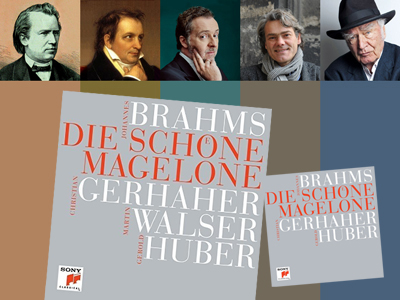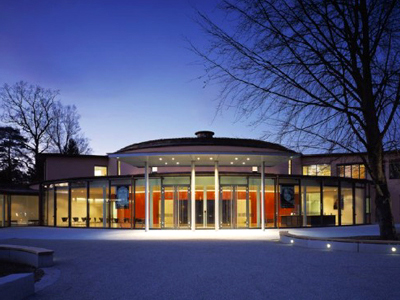
By ANDREW POWELL
Published: October 16, 2017
MUNICH — Sony has released a remarkable recording of Brahms’s Magelone-Romanzen, Op. 33, complete with Zwischentexte prepared by German author Martin Walser. Christian Gerhaher sings the fifteen songs and recites two of the other three poems (the 1st, 16th and 17th) from Ludwig Tieck’s 1797 narrative not set to music. Walser, 87 at the time of the recording, reads his own choice of eloquent, plain words, condensing Tieck’s eighteen-section prose while still advancing the tale and earmarking each song, as Brahms would have expected. Between the two of them, the German language has never sounded more beautiful. Gerold Huber accompanies. Sessions stretched over five days, at Bayerischer Rundfunk here, an indication of the care taken. This 93-minute, 2-CD release, with booklet essay and Romanze texts in German only, has EAN 088985 3110223 and ASIN B01NA7L2AN and must be distinguished from the widely reviewed single-disc issue omitting Walser’s work. Essential listening.
Images © StadtMuseum Bonn, 1865 wood engraving after a drawing (Brahms); 1838 oil on canvas by Joseph Karl Stieler (Tieck); Gregor Hohenberg (Gerhaher); Marion Koell (Huber); Philippe Matsas (Walser)
Related posts:
Fall Discs
Tutzing Returns to Brahms
Time for Schwetzingen
Liederabend with Hvorostovsky
Gergiev, Munich’s Mistake

Concert Hall Design Chosen
Friday, October 27th, 2017By ANDREW POWELL
Published: October 27, 2017
MUNICH — Though it will be built on the wrong side of the wrong train station, Munich’s much-debated, much-delayed new concert hall crept toward reality today with the announcement of a winning design. Bregenz-based Cukrowicz Nachbaur Architekten secured first place in the competition for the venue, now dubbed “Münchner Konzerthaus” (instead of “Konzertsaal München” or “Neues Odeon”), said Bavaria’s Interior Ministry. A 25-person jury reviewed thirty-odd designs yesterday and this morning at the Hochschule für Musik und Theater before reaching its decision. Details will be given tomorrow at a news conference; seating capacity may be stated as 1,800 with project cost at €300 million.
All being well, which is saying a lot in this city on this subject, a bulbous glassy prism with its top planed off will as early as 2019 start to rise just east of Munich East train station on blighted land long home to a Knödel factory. In it symphonic music will be played to audiences larger than at the Herkulessaal and with better acoustics than at the Gasteig, Munich’s two problematic existing halls. The Bavarian Radio Symphony Orchestra will for the first time in its seven-decade history have a home.
But things going smoothly won’t change the location. Questions that have been asked since the site was announced two years ago — out of the blue, in a political about-face after it seemed the whole new-hall idea had been killed by Bürgermeister Dieter Reiter and Bavaria’s Minister-Präsident Horst Seehofer, and following twenty years of consideration of some half-dozen other sites — are stark and tinged with disbelief that a prime location was not feasible. Will people want to travel outside Munich’s historic core for art music? Will concertgoers coming into town from the suburbs want to change trains at Munich Central Station, ride five stops to Munich East, another hub, and then walk 200 meters further east? One would think not. The very benefit of siting the new hall in this drab place, that it could be built expeditiously, may limit its success.
Illustrations © Hans-Joachim Wuthenow
Related posts:
MPhil Bosses Want Continuity
New Hall for Munich?
Chung to Conduct for Trump
Nézet-Séguin: Hit, Miss
Bretz’s Dutchman, Alas Miked
Tags:Bavarian Radio Symphony Orchestra, Commentary, Cukrowicz Nachbaur Architekten, Dieter Reiter, Gasteig, Herkulessaal, Horst Seehofer, Konzertsaal München, München, Münchner Konzerthaus, Munich, Neues Odeon, News, Symphonie-Orchester des Bayerischen Rundfunks
Posted in Munich Times | Comments Closed